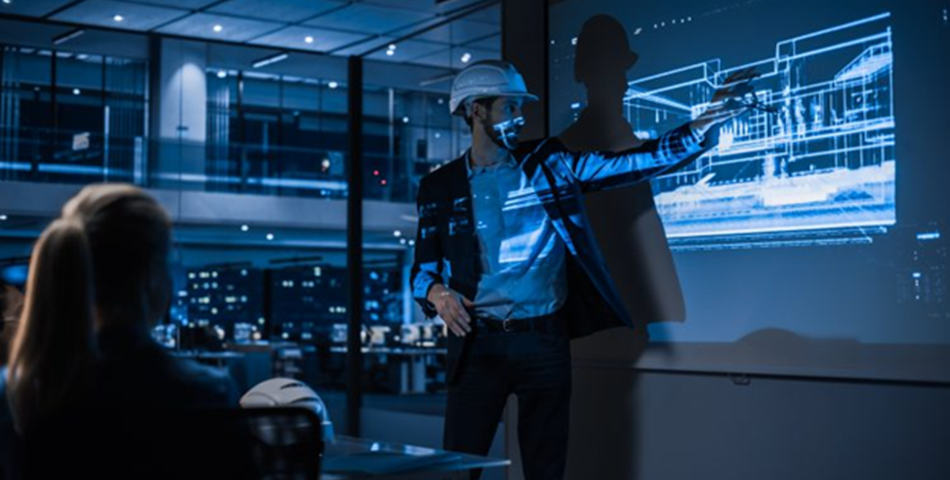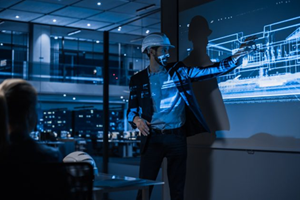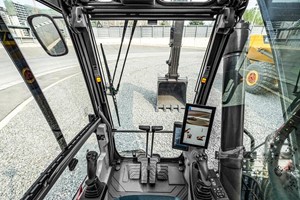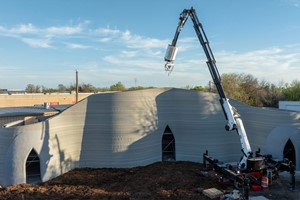The digital twin concept has been steadily gaining traction in the construction industry. It is an information model that accurately simulates a physical asset or system and provides insight into its operations. This technology could revolutionise the way construction projects are managed and developed, allowing for detailed analysis of data from multiple sources to provide better insights into project performance.
Understanding the future of digital twins in this field is essential. In examining these topics, readers should gain a comprehensive overview of the opportunities and risks of using digital twins in construction.
A digital twin is an emerging technology that has the potential to revolutionise construction processes
A digital twin involves creating a digital replica of physical objects, such as buildings and infrastructure, by leveraging data from various sources, including sensors, 3D models, and analytics tools. This virtual representation can be used for predictive analysis, detect issues early in the design process, streamline workflows, improve collaboration among stakeholders and provide better overall project insights.
The concept of a digital or virtual twin is not new; it was first proposed in 2002 by Michael Grieves at the University of Michigan’s Center for Integrated Manufacturing Systems. Since then, its application in the construction industry has been steadily increasing due to advances made in sensing technologies like LiDAR scanning and BIM (Building Information Modeling). The use of these digital twins enables more efficient communication between architects, engineers and contractors during the pre-construction phase while simplifying ongoing operations throughout the life cycle of a building or structure.
By combining detailed information about existing structures with real-time feedback from on-site sensors, digital twins offer unprecedented visibility into projects before they are built. With this level of insight available to all parties involved in a build – from designers to owners – costly mistakes can be avoided up front, and decisions can be made quickly based on accurate data points. The result is greater efficiency across projects and time saved when managing assets over their entire lifecycle.
Digital twin applications in construction offer unprecedented opportunities for predictive modelling
From improved safety protocols to enhanced workforce productivity, the digital twin allows stakeholders to model various aspects of their projects before they occur. By offering real-time insights and analytics, this technology can be leveraged by architects, engineers, and contractors alike to make informed decisions about resource allocation, scheduling of tasks, and other operational issues. Furthermore, with access to past data on similar projects and current conditions onsite, design teams have a better chance of meeting deadlines while keeping costs under control.
The potential uses of digital twins in construction are vast. For example, they allow project managers to simulate different scenarios—such as impacts due to weather patterns or changes in staffing—and assess how these may affect overall timelines and budgets. Additionally, by using IoT sensors that measure environmental factors such as temperature and humidity levels within buildings over time, 3D models can be generated, which give an accurate picture of the structure’s condition and progress towards completion. Finally, digital twins can also help track material supplies throughout the life cycle of a project, from procurement through installation and beyond; their analytics can generate insights into cost savings across all stages of a building’s development.
In short, digital twins provide significant advantages for those involved in construction: greater accuracy in forecasting future outcomes; a deeper understanding of complex systems; more efficient use of resources; improved timeline management; reduced risk factors associated with certain activities; faster response times when problems arise; and ultimately increased profitability for businesses who utilise them successfully.
What are the benefits of digital twins in construction?
The potential benefits of digital twin technology in the construction industry are far-reaching. From cost savings to project efficiency and risk reduction, this innovative approach is revolutionising how projects are completed.
Cost savings
Digital twins provide a powerful tool for cost management by allowing users to create precise estimations more quickly and accurately than ever before. With real-time access to data, teams can identify areas where costs could be reduced or money saved during the planning stages. This helps ensure that budgets remain within target while providing valuable insight into potential future expenditures.
Project efficiency
By enabling team members to collaborate on tasks remotely, digital twins make it easier to manage complex projects with greater speed and accuracy. Monitoring real-time progress allows managers to adjust their strategies and keep the project running smoothly. Furthermore, having instant access to relevant information makes it simpler for everyone involved to stay up-to-date on the latest developments without wasting time searching through multiple sources.
Risk reduction
As digital twins offer an accurate representation of physical objects and environments, they help reduce risks associated with various aspects of construction work, from engineering design flaws to equipment malfunctioning. They allow stakeholders to anticipate problems early on and take preventive measures accordingly. In addition, digital twins enable workers to detect any issues immediately so solutions can be implemented swiftly, reducing costly delays caused by unforeseen circumstances such as faulty material shipments or bad weather conditions.
By promoting collaboration across departments, enhanced communication amongst all parties involved in a project, and more efficient use of resources, digital twin technology offers significant improvements that will benefit businesses and organisations well into the future.













